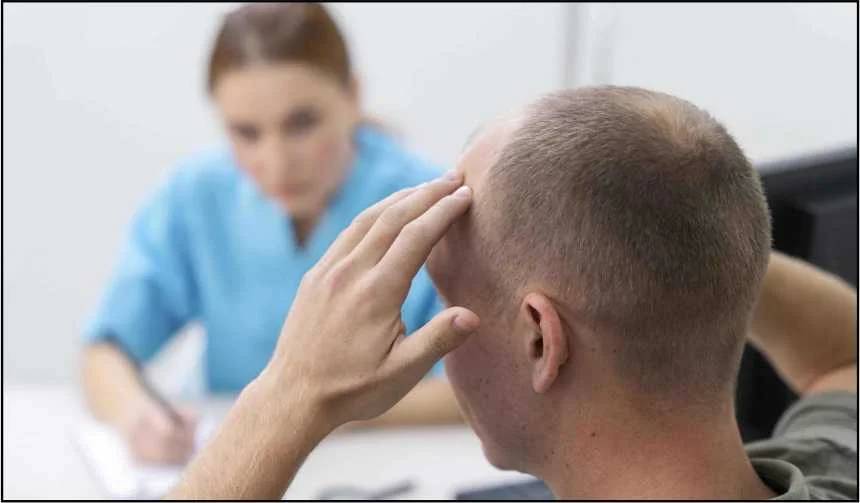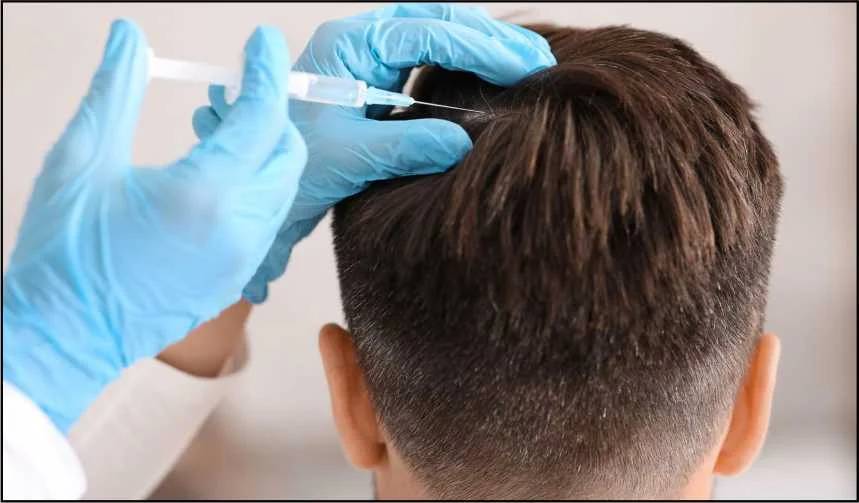Hair loss is a common concern for both men and women in India. Hair fall may occur excessively due to pollution, stress, poor diet, and genetics. This not only influences the outlook but also reduces self-confidence. People are in pursuit of the best treatment for hair loss to get back their hair and self-esteem. Among the many solutions available, one of the most popular is hair restoration. However, is it the right option for everyone? So, let's find out.
What Is Hair Restoration?
Hair restoration is the term used to indicate surgical and non-surgical activity that aims at regrowing or transplanting hair. It is predominantly applied to baldness in men, though women with thin hair or bald patches can also use it.
Hair restoration is mainly of two types:
Surgical Hair Restoration
Consists of hair transplant techniques such as FUE (Follicular Unit Extraction) and FUT (Follicular Unit Transplantation).
Non-Surgical Hair Restoration
Comprises Platelet-Rich Plasma (PRP), low-level laser therapy, and other topical solutions.
Such treatments are customised depending on the reason and the level of your hair loss.
Why Does Hair Loss Happen?
Hair fall is caused by many factors. Before selecting a treatment, it is very important to identify the cause:
Genetics
Male or female pattern baldness is genetic.
Hormonal Changes
Hair fall may be caused by PCOS, menopause, pregnancy, or thyroid complications.
Stress
Shedding of the hair can occur in response to emotional or physical stress temporarily.
Poor Diet
Deficiency of iron, vitamin D, and proteins makes hair weak.
Medical Conditions
The patchy loss is caused by diseases such as alopecia areata or autoimmune diseases.
Hair Products
Harsh hair products, heat styling, and constant colouring harm hair roots.
Non-Surgical Options for Hair Fall Treatment
1. Topical Medications
- The most widely used topical solution is minoxidil. It activates the follicles and boosts blood circulation in the scalp.
- Appropriate for early-onset hair loss among men and women.
2. Oral Medications
- Finasteride is prescribed widely to men. It works by inhibiting the DHT hormone that leads to the shrinking of the hair follicles.
- It is not appropriate for women, particularly when pregnant.
3. PRP (Platelet-Rich Plasma)
- Your blood is taken, processed, and the platelets are put into the scalp through injection.
- Encourages the hair to grow back and thicken the existing hair.
- It should be carried out as early as possible, in a series of sessions.
What Is Hair Transplant Surgery?
Hair transplant involves taking the healthy hair follicles from an area of the body, such as the back of the head and implanting them in the bald parts. The two common techniques are:
FUT (Follicular Unit Transplantation)
- A strip of scalp is taken and divided into units of single follicles.
- A little more invasive and may leave a small scar.
- It is advisable to use it when covering large areas is required.
FUE (Follicular Unit Extraction)
- Isolated follicles are taken out and placed.
- Less invasive, less time taken to recover, and no scarring is seen.
- Known because of natural results.
Is Hair Restoration the Best Option for You?
Yes, hair restoration is ideal if:
- You have visible bald spots.
- Other options (such as PRP or Minoxidil) have had no effect.
- You want a lasting solution.
- The area of the donor is good.
To have the most long-lasting and natural outcome, go with hair restoration. When done by an experienced surgeon, it is safe and effective.
Advantages of Hair Restoration
Permanent Results
Transplanted hair will grow as natural hair and last a lifetime.
Natural Look
Modern techniques replicate the natural hairline.
Quick Recovery
Most people get back to their day-to-day lives within a couple of days.
Boosts Confidence
A complete head of hair will do so much to maximise self-image.
Risks or Side Effects
Hair restoration is usually risk-free, but may contain:
- Mild swelling or redness post-surgery
- Temporary shedding of transplanted hair (shock loss)
- Scarring in FUT
- Uneven growth in the early months
These side effects are mostly temporary and fade away with proper treatment and advice from the best dermatologist in Delhi.
Surgical Hair Restoration vs Other Treatments
|
Feature |
Surgical |
PRP & Medications |
|
Duration of Results |
Permanent |
Short term (requires repetition) |
|
Time to See Results |
6-12 months |
3-6 months |
|
Maintenance |
Minimal |
Regular follow-ups needed |
|
Cost |
Higher initially |
Lower but recurring |
|
Best For |
Advanced baldness |
Early-stage thinning |
What to Expect During the Procedure
Consultation
Photos, evaluation of the scalp, and blood testing (when required).
Preparation
Marking the areas, trimming of the hair, and anaesthesia.
Procedure
Grafting and placement, lasting 4–8 hours.
Post-care
The mild pain medications, antibiotics, and measures to care for the scalp.
Aftercare Tips for Best Results
- For 48 hours, one should not touch the scalp or wash it.
- Apply shampoos and lotions with the guidance of the doctor.
- Do not smoke, drink alcohol, or go in the sun for at least a week.
- Sleep in such a way that the head is raised to a minimum level.
- Do not exercise heavily for 10-14 days.
These are some of the tips that will help you have a successful hair fall treatment.
Cost of Hair Restoration in India
The cost is dependent on factors like:
- The amount of grafts required
- The procedure applied (FUT or FUE)
- Experience of the dermatologist
- The clinic’s location
Although it appears to be costly at first, it is a cost-effective measure in the long run since it is permanent.
How to Choose the Right Clinic
- Review the dermatologist’s experience and qualifications.
- Look at pre- and post-photographs of former patients.
- Make sure hygiene and safety are maintained.
- Inquire about the methods and tools applied.
Conclusion
In case you feel tired of hair fall and are seeking an ultimate permanent hair fall treatment, hair restoration can be the right solution. It is safe, efficient, and it not only gives back your hair but also your confidence.
At Skin Roots Clinic, a team of professional dermatologists provide customised services with state-of-the-art technology for hair restoration. No matter which procedure it is: PRP, advanced FUE, or even mix therapy, the clinic guarantees the best outcomes. Book your consultation now and begin your journey to healthy, beautiful-looking hair.
FAQs
1.How long hair transplant results last ?
Hair transplant is permanent, though overall hair care should be done to sustain the effect.
2. Can surgical hair restoration treat genetic baldness?
It does not alter the root cause, but it works best in the case of hereditary or pattern baldness by transforming the look
3. Is the process going to hurt?
It is performed under local anaesthesia. You may feel slight discomfort, not nagging pain.
4. Do hair transplants have any age limit?
It is usually advised by most clinics after the age of 25, when the root cause of the loss of hair is identified and hair loss becomes stable
5. Can I get PRP and hair transplant together?
Yes. PRP may be carried alongside a hair transplant, resulting in better outcomes and quicker recovery.




